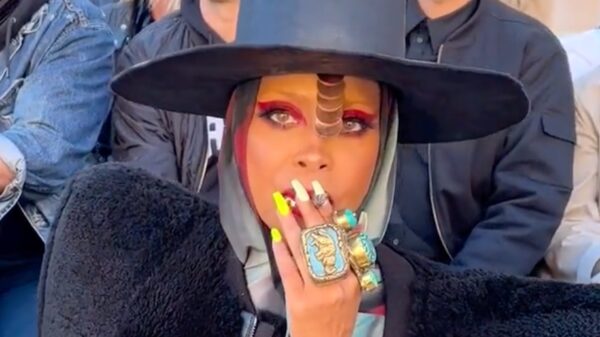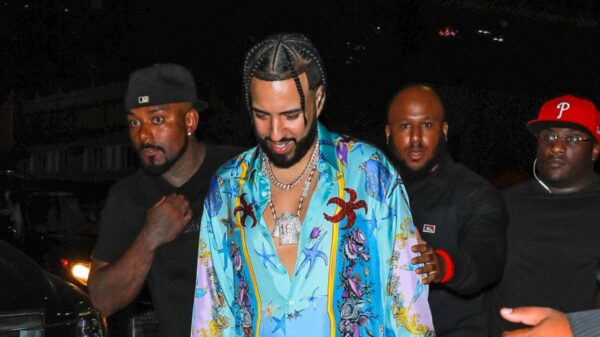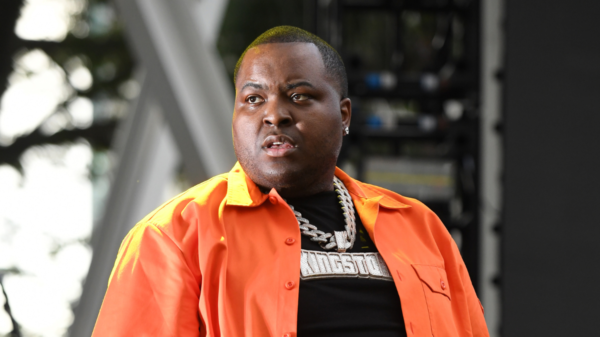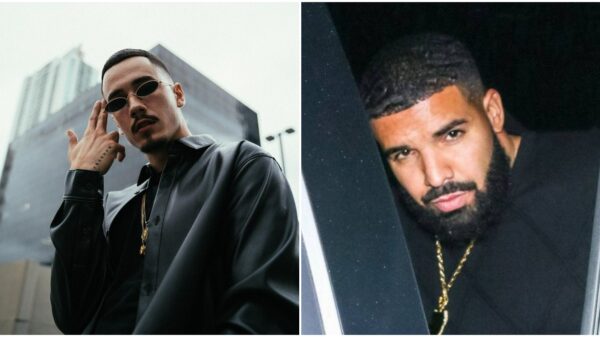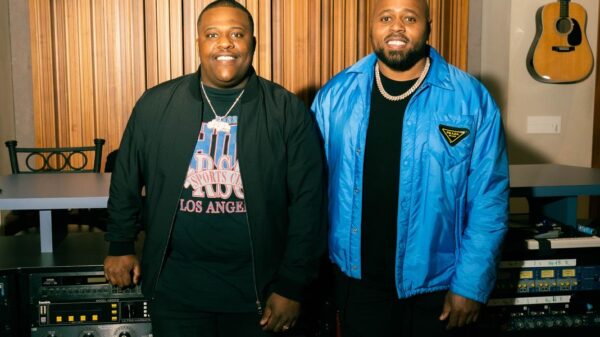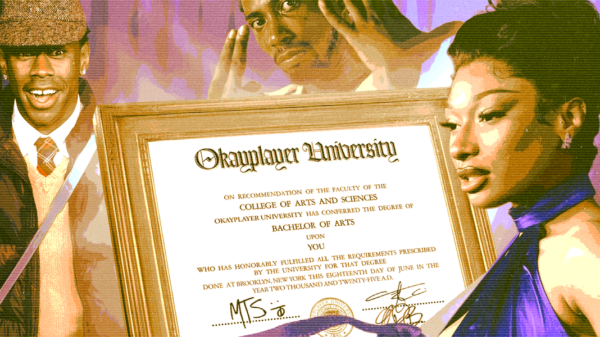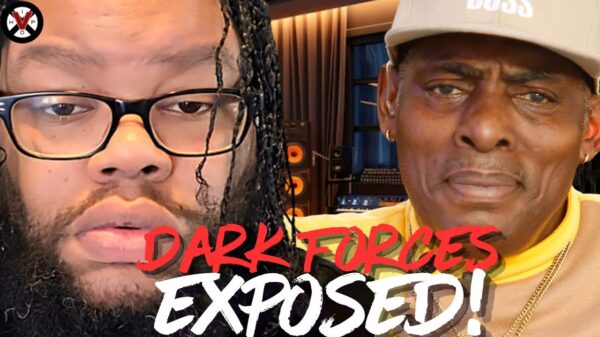“I write a rhyme, typically will not end for days / Scrutinize my literature from the massive to the miniature.”
To be an MC — no less than in the way in which expressed above — is an arduous and relentless endeavor. Even you probably have the present of gab as a lyricist, there’s nonetheless a self-discipline essential to craft the phrases one envisions of their head, put pen to paper and articulate it as a bit of music.
Mos Def, now often called yasiin bey, got down to do precisely that — not only for the music he uttered these strains on, “Hip Hop,” however for 16 others that made up his debut album, 1999’s Black on Each Sides. Formidable, eloquent and enjoyable, bey would launch this album on the storied Rawkus Data, the hip-hop label that launched different beloved tasks all through the late ‘90s and 2000s, together with Firm Movement’s Funcrusher Plus, bey’s and Talib Kweli’s Mos Def & Talib Kweli Are Black Star, Pharoahe Monch’s Inside Affairs, Huge L’s posthumous The Huge Image, Kweli’s High quality and Kool G Rap’s The Giancana Story.
But it surely’s primarily Rawkus’ ‘90s releases, particularly these talked about, that aren’t simply considered the label’s finest, however a number of the finest hip-hop albums of the ‘90s. The frequent thread that connects them isn’t simply the apparent of sharing the identical label, however the ardour for rap shared by every MC, and the expectation of the listener to faucet in with them. Whether or not it’s Funcrusher Plus or Inside Affairs, these our bodies of labor are precisely that: movie-length albums meant to problem and reward listeners with lyrical wordplay that stood out then and now.
Nevertheless, as nice as all of them are, bey’s Black on Each Sidesreigns supreme.
Even earlier than the album got here out, bey had already proven promise as the subsequent guard of New York Metropolis hip-hop. A transparent descendant of the Native Tongues aspect of ‘90s hip-hop, bey had been given De La Soul’s blessing, going bar-for-bar along with his influences and friends on the group’s “Huge Brother Beat” from 1996’s Stakes Is Excessive. And two years later, he had his correct debut with Black Star.
In fellow Brooklyn MC Kweli, bey had discovered musical chemistry, and that’s evident on Black Star. The duo confirmed that they may have the lyrical dexterity of Firm Movement’s El-P and Bigg Jus, exploring the fun and pains of Blackness — all soundtracked by manufacturing that might’ve felt proper at dwelling on A Tribe Known as Quest album.
– YouTubewww.youtube.com
The album was impeccably — flawlessly — executed: a mission that proved bey and Kweli’s prowess as MCs. But it surely was clear that bey may achieve this rather more than rap; as a pair songs confirmed — “Brown Pores and skin Girl,” “Thieves within the Night time” — he may even sing, showcasing an ear for melody that helped floor sure tracks with memorable hooks.
It’s this versatility that makes Black on Each Sides such a standout. Sure, everybody on Rawkus may rap. However bey needed to do greater than that — and he did.
The album’s starting is a testomony to this. He waits till Black on Each Sides’ second observe, the aptly named “Hip Hop,” to supply followers the raps they had been anticipating as quickly as they pressed play, and as a substitute begins off with “Worry Not of Man,” a spoken phrase commentary on the state of hip-hop (and the way its state relies on the individuals who take part in it) backed by a pattern of Afrobeat pioneer Fela Kuti’s “Worry Not For Man.”
It’s a subversive introduction: a declaration the place what bey is saying is extra essential than how he’s saying it.
“Thoughts over matter and soul earlier than flesh” is a robust, thought-provoking line, made all the higher with out a rhymeless line to accompany it. Truly, it punctuates two strains that rhyme collectively, hinting at how intentional bey was in making that bar stand out.
After which, the raps come.
“Hip Hop” is simply as celebratory of the style as it’s vital of it. In the identical music the place he riffs off pioneering MC Spoonie Gee and shouts out his Native Tongues household tree, he calls out the commercialization of hip-hop, providing strains that linger of their unflinching honesty: “Hip-hop will merely amaze you, reward you, pay you / Do no matter you say do, however, black, it could actually’t prevent.”
And that sort of sobering truth-telling isn’t simply in regards to the complexities of hip-hop changing into a worthwhile enterprise. It’s directed on the air pollution of pure assets we want (“New World Water”), the racial profiling Black individuals expertise no matter their fame or wealth (“Mr. Ni**a”) and the various, many, many struggles common Black individuals face in America (“Arithmetic”).
What helps the medication go down straightforward in songs like that is the manufacturing. The way in which DJ Premier splices collectively an unlikely fusion of sources — from The Fatback Band’s “Child I’m-a Need You” to an Angela Davis interview — to create the booming swagger that’s “Arithmetic” is essential to Bey’s lyrical onslaught.
Even on songs like “Umi Says,” it’s the beat that makes what bey is saying simpler to digest, the artist self-producing the observe alongside recording and mixing engineer David Kennedy, with contributions from the late Weldon Irvine on Hammond organ, and can.i.am (sure, you learn that proper) on electrical piano. It’s Irvine’s organ that’s central to the instrumental although, his taking part in a baptism of musical waves that’s a nice distinction to bey’s poignant second verse.
The soundscapes all through add to the flexibility of Black on Each Sides. One second, you could have the Afrobeat-tinged “Worry Not of Man” that bey self-produced; the subsequent, the psychedelic soul of The Bar-Kays’ “Memphis Dawn” for “Rock N Roll,” which was produced by The Beatnuts’ Psycho Les.
In that selection, every music differs in really feel, temper and tempo. And there was even one music specifically that embodied that selection in such a compelling means: “Brooklyn.”
Though Firm Movement tried one thing related on Funcrusher Plus’ “Tragedy of Conflict (In III Components)” to commendable however middling outcomes, there actually is not any “Brooklyn” equal on some other Rawkus Data launch. An bold soundscape crafted by Ge-ology, bey and Kennedy, “Brooklyn” is a three-part motion; a beat change upon beat change of near-flawless execution, the place Milt Jackson’s “What Are You Doing the Remainder of Your Life?” meets Roy Ayers’ “We Dwell In Brooklyn, Child,” meets the Infamous B.I.G.’s “Who Shot Ya?”
“It got here as a shock to us that Yasiin needed to merge the three completely different productions [on ‘Brooklyn’] into one composition, however you don’t query genius,” Kennedy stated of “Brooklyn” in a 2019 Vice interview about Black on Each Sides. “I simply adopted Yasiin’s lead and made the edits.”
And bey is pacing himself all through all of this as he honors his beloved borough. However simply as difficult as it’s, you may inform he’s having enjoyable. Whether or not it’s lyrical endurances like “Brooklyn” or extra simple, pop-leaning tracks like “Ms. Fats Booty,” there’s no denying that he’s merely having enjoyable rapping.
– YouTubewww.youtube.com
That these two songs can exist alongside a observe the place bey goes on a punk rock tangent (the top of “Rock N Roll”) or an album-ender that’s a rapl-ess instrumental jam morphed from Kool & the Gang and KC & the Sunshine Band samples, speaks to bey’s musical adaptability.
Not solely may he give peak rap lyricism — providing rhymes that managed to be clever, environment friendly, and poignant — he may experiment each musically and lyrically, which is why Black on Each Sides is so distinct.
The rap dexterity of Funcrusher Plus is undeniably unbelievable, however at occasions it feels extreme, not simply due to the a number of five-minute-plus tracks current all through, however the total darkish and dour soundscape of the music. Inside Affairs shines in each its raps and assorted manufacturing (what Diamond D did on the “Gentle” with that Wes Montgomery guitar pattern is a brilliance akin to Q-Tip and the late J Dilla sampling Joe Go on “Let’s Journey”), however the album doesn’t fairly get well from the booming rap-roundhouse-kick-to-the-dome that’s “Simon Says.”
And Black Star, as virtually good as it’s, does extra to outline hip-hop greater than it does redefine it.
Black on Each Sides achieved all of these issues and extra. In it, you might see the long run: the genre-blending that might include the Soulquarians, the Native Tongues-inspired collective bey was a part of, but in addition so many left-of-center rappers, too — Andre 3000, Kanye West and Kendrick Lamar.
In its experimentation, inventiveness, playfulness and flexibility, Black on Each Sides didn’t simply care to be an ideal rap album; it needed to be an ideal album — a mission that honored bey’s previous influences whereas signaling what hip-hop might be.
“It was my first report; I wasn’t sure I’d get the chance to do it once more,” bey informed Highsnobiety in 2019. “So I simply put all of it out of my thoughts.”

